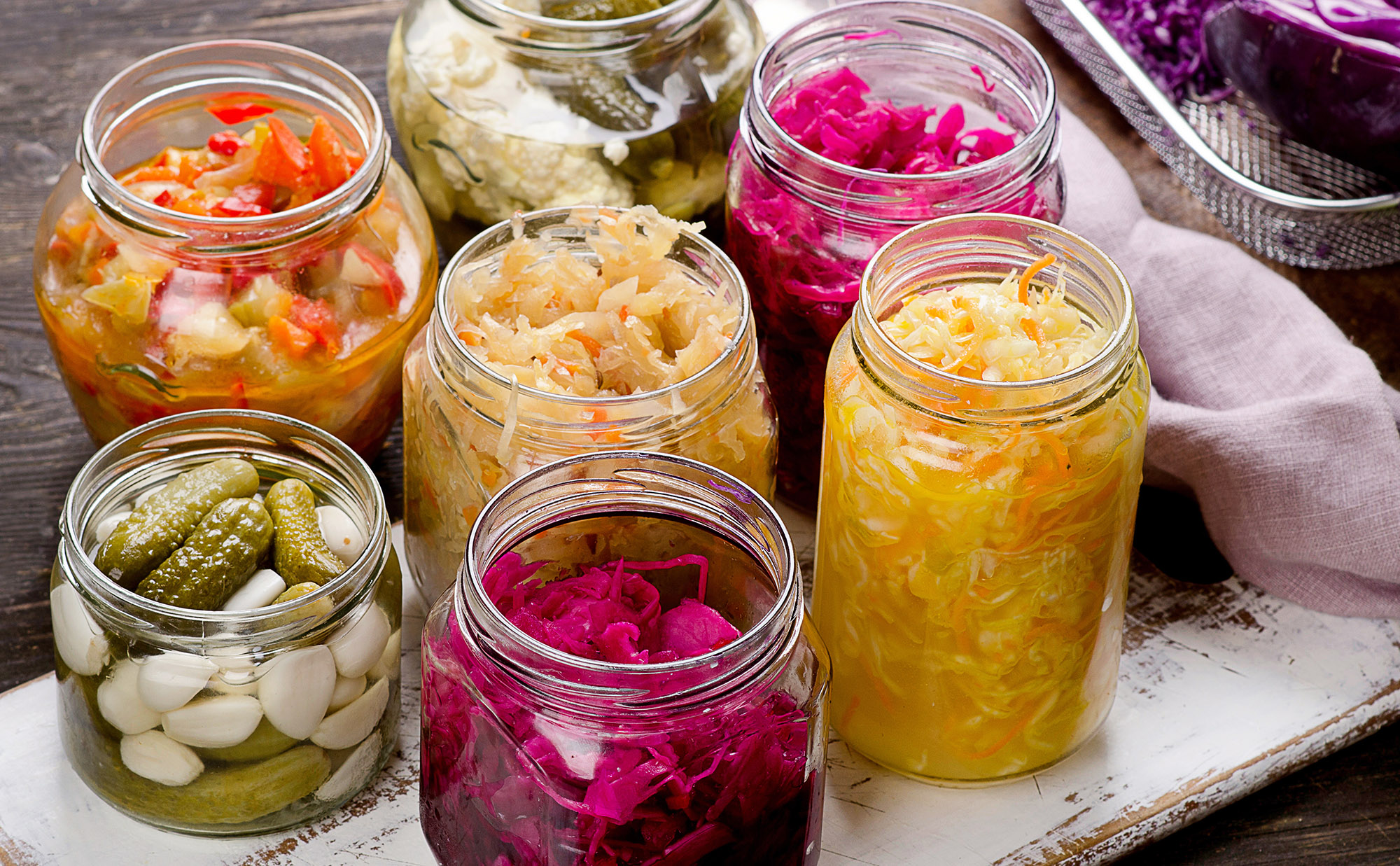All About the FODMAP Diet
Nutrition | July 31, 2019
Our gut is at the center of our health. It’s a part of an intricate web that affects our nutrient absorption, immunity, moods, hormones, and so much more. Gut health has become one of my favorite topics to research for this very reason: its interconnectedness to our entire body and mind. But when it’s not working as optimally as it should, things quickly plummet and fall apart like a trail of dominos. And one of the many different ways of addressing a troubled gut is through diet. Going gluten-free, vegan, paleo, keto, even the rising carnivore trend can all happen when someone recognizes the crucial link between the food on their plate and digestive health. However, there is another diet that people undergo in the hopes of resolving persistent gut problems- the Low-FODMAP diet. (Which I covered very briefly in my elimination diet post.) If you’ve ever wanted to know about this particular type of elimination diet and think it might be a good fit, read on for the 101. Are you ready? Then let’s get to it
What’s a FODMAP?
FODMAP is an abbreviation for fermentable oligo-di-mono-saccharides and polyols. As you can see, that’s quite a mouthful, hence the reason for simply using FODMAP. FODMAPs are highly fermentable types of carbs that may cause excess bloating, malabsorption, gas, stomach pain, bowel irregularities, and all sorts of GI-related issues. They’re also osmotic, meaning they pull water into your intestines and cause further issues with the resident bacteria. (More on these guys here.) FODMAPS are also prebiotic, meaning they feed those aforementioned bacteria. However, even within our gut, we can get too much of a good thing. Irritable bowel syndrome (IBS), Irritable Bowel Disease (IBD), and small intestinal bacterial overgrowth (SIBO) are two such cases when a diet that is low in FODMAPS can be prescribed to manage symptoms. On paper, removing the triggering FODMAPS enables your gut to heal and rebalance itself over time. Hence the creation of the Low FODMAP diet by researchers at the Monash University in Australia. [1] [2]
Where to Find FODMAPs
The following foods all contain FODMAPS, and are subsequently removed when following the Low FODMAP diet:
- Vegetables: artichoke, asparagus, beets, brussels sprouts, cauliflower, celery, garlic, green peas, leek, mushrooms, okra, onion, scallions (white parts only), shallots, snow peas, peas, and sugar snap peas
- Fruits: apples (as well as the juice), apricots, blackberries, canned fruit, cherries, dried fruit (raisins, cranberries, prunes, etc.), fruit juice, grapefruit, mango, nectarines, peaches, pears, plums, pomegranates, and watermelon
- Dairy:all lactose-containing dairy is removed
- Non-Dairy: oat milk (unless it’s less than 1/8 of a serving) and soy (due to them being a legume; see below)
- Legumes:beans, split peas, lentils, and soy
- Animal-Based Food: processed and marinated products made from beef, poultry, pork, lamb, and seafood (i.e., smoked salmon, salami, bacon, etc.)
- Grains:whole wheat, couscous, farro, rye, semolina, and barley
- Nuts and Seeds: cashews and pistachios
- Other:high fructose corn syrup, agave, honey, isomalt, maltitol, mannitol, molasses, xylitol, sorbitol, and sugar-free confectionery
[3] [4] [5]
FODMAP-Friendly Foods
If you thought that list was crazy, then focus on this. Here’s a compilation of FODMAP-friendly foods that give you the green light for consumption:
- Vegetables: arugula, bamboo shoots, bell peppers, broccoli, bok choy, carrots, celeriac, collard greens, cabbage, corn (1/2 a cob is recommended), eggplant, endive, fennel, green beans, kale, lettuce, parsley, parsnip, potato, radicchio, scallions (green parts), spinach, squash, sweet potato, swiss chard/green chard, turnip, water chestnut, zucchini, and summer squash
- Fruits:avocado (less than 1/8this recommended), banana, blueberries, cantaloupe, grapes, honeydew melon, kiwi, lemon, lime, mandarin oranges, olives, oranges, papaya, plantain, pineapple, raspberry, rhubarb, strawberry, tangelo oranges, and tomato
- Non-Dairy: almond, macadamia, hemp, cashew, hazelnut, coconut, and lactose-free dairy
- Legumes: tofu and tempeh (curiously, the soy from these two is allowed)
- Animal-Based Foods: beef, chicken, eggs, fish, lamb, pork, shellfish, turkey (must be cooked; sushi is a no-go)
- Grains:amaranth, brown rice, white rice, rice cakes, bulgur wheat (must be less than ¼ cup cooked), oats, quinoa/ quinoa flakes, spelt/ sourdough spelt bread, corn flakes, and millet
- Nuts and Seeds: caraway, chia, pumpkin seeds, sesame, sunflower, almonds, brazil nuts, hazelnuts, macadamia, pecans, pine nuts, and walnuts
- Other:dark chocolate, maple syrup, rice malt syrup, table sugar (I personally don’t recommend consuming sugar, FODMAP or no)
[3] [4] [5]
How to Follow the FODMAP-Treatment Plan
After being prescribed the Low-FODMAP diet, you’ll most likely undergo a treatment plan, which follows three phases.
The first is the actual diet itself. You adhere to the list of FODMAP-friendly foods and cut out all of the high-FODMAP items I listed previously. Time-wise, this typically lasts between 2-6 weeks.
The second part is the reintroduction phase. For 8-12 weeks, you loosen things up a bit by slowly introduce one FODMAP-containing food at a time. You’ll be asked to reintroduce the food for 3 days, starting off with a small portion and increasing it very slightly until day 3. If there are no adverse reactions or symptoms, then you’ve made a successful reintroduction. Repeat the process with as many high FODMAP foods as while still following a mostly low FODMAP diet.
The third and final phase is based on the results of phase 2. This is what’s known as your maintenance plan. You’ll already know what foods work best for your body and which ones cause the most problems. Tolerance is the name of the game here. If you’re in a flare or need to go back and reset yourself, you simply start over from phase 1 and work your way back into phase 2 in order to identify your unique triggers.
According to the researchers at Monash University, three out of four people find symptomatic relief from following the Low-FODMAP diet, stating, “In most cases, people are able to reintroduce many high FODMAP foods back into their diet, but may not be able to eat them as often or in the same quantity as they did before. There is no one-size-fits all that’s why a FODMAP Personalization diet holds the key to getting on with your life!”
[6] [7] [8] [3]
Pros & Cons
Consider the following before adopting a Low-FODMAP diet.
The Pros:
- Provides almost immediate relief from persistent GI complaints
- For extreme cases, it becomes a lifestyle, not a diet
- Is a great dietary intervention when treating conditions such as IBS, IBD, and SIBO
- Functions as a diet-based diagnostic tool for identifying food intolerances/triggers
- Improves the quality of life for patients
The Cons:
- Requires commitment; it won’t work unless you do- no cheating
- Ideally, you should be monitored and working with either a doctor or dietitian when following it
- Can lack fiber
- Some find it to be overly restrictive
- May be difficult to adhere to; you must plan ahead, prioritize control, and be diligent on avoiding high FODMAPs
- Often requires a lot of cooking (which allows for ingredient control)
- Has the potential to starve the gut of good bacteria, leading to dysbiosis (bacterial imbalance)
- Phase 1 is notmeant to be followed forever; the crux of the diet is to temporarily relieve symptoms and help identify culprits- not eliminate everything in sight
- Is not a cure; some people use it as a band-aid while ignoring causations, such as infections and underlying inflammation
Sum Up
Putting everything together, a Low-FODMAP diet can be helpful under the right circumstances. Ideally, you should be following after being officially diagnosed by a healthcare practitioner. And even then, you should actively be working to correct the root cause of your problem. A diet such as this can be too restrictive and potentially lead to nutrient deficiencies and imbalances in the microbiome (gut) in the long term.
If you’ve ever eaten a Low-FODMAP diet, let me know your experiences and whether or not it’s made a difference. I am by no means saying you shouldn’t follow it. Just that there are some legitimate concerns. No diet works for everyone, and not everyone needs to follow the same diet.
(Want a simple way to help an out of whack gut? Read the following posts here and here for some tips!)
Sources:
[1] https://www.aboutibs.org/low-fodmap-diet.html
[2] https://www.theibsnetwork.org/diet/fodmaps/
[3] https://www.monashfodmap.com/ibs-central/i-have-ibs/starting-the-low-fodmap-diet/
[4] https://www.webmd.com/ibs/guide/what-is-fodmap#1
[5] https://www.verywellhealth.com/foods-on-the-low-fodmap-diet-1944679
[6] https://stanfordhealthcare.org/medical-treatments/l/low-fodmap-diet.html
[7] https://www.healthline.com/nutrition/low-fodmap-diet#section4
[8] https://aboutibs.org/low-fodmap-diet/five-low-fodmap-diet-pitfalls-and-what-you-can-do-to-avoid-them
















Private Member |
maryland, usa
Hi Zuzka, I have been doing the low FODMAP diet with a nutritionist for 2+ months as I was having digestive issues I couldn’t figure out. I thought I was being healthy and I tried for so long to figure out what was going on. I figured I was lactose intolerant so I avoided that and things improved…slightly. But I still was way off in digestion. After 2 years of struggling, I finally contacted a RD who said I have IBS.
I started with the elimination diet plan and then the challenge phase. The biggest eye opener for me was I was consuming WAY too much of high FODMAP foods that I thought were healthy – and they are! – just I was eating too much. So a food item may be in the approved area, there is indeed a portion size.
Monash has a great app that takes out the guess work of what is LOWFOD map and if not, what portion size does it become High, or which foods at what size contain high levels of one of the FODMAPS.
Through working with the nutritionist and the “challenge phase” I discovered what of the FODMAP was really giving me trouble. It is eye opening! Because for me I was just living with major digestive issues and eating “healthy” but I was making the situation way worse. So when I did the elimination diet I felt on top of the world because everything was flowing and I didn’t feel bloated or gas! And once I introduced the FODMAPs one by one, I noticed so far 2 that give me issues. And I work back with my nutritionist and on to the next challenge.
When I had the flair ups I remember thinking, “I lived like this EVERY single day.”
It is important to do this with a nutritionist because it is not supposed to be long term and they need to make sure you get the right nutrients in your body. So for example, I was told the elimination diet and challenge phase can be low in calcium so you need a professional to be sure you get a diet plan that gives you something as well rounded as possible. My diet includes lactose free milk, plain kefir and chedder cheese. And it is more dairy than I ever consumed. And I avoided cheese for YEARS so eating that first bite of chedder cheese for the first time…I almost cried. haha! And I am learning there are cheeses I can have! But again..it is portion size before you cross over into high lactose.
Anyone doing this, don’t do it alone. It’s very complicated and certainly find a pro to work with. But Zuzka laid it out really nicely.